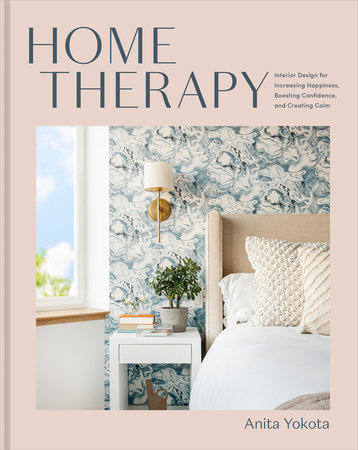Welcome to Home Therapy Hello. Come in, sit down, and get comfy. Congratulations on taking the first step toward creating a beautiful home that prioritizes your mental wellness. Maybe this isn’t the first time you’ve opened a book about therapy, or perhaps you have no idea what therapy really is, and that’s okay.
Therapy is for everyone. We all have challenges we face and could use someone to bounce ideas off of in order to navigate our way to the other side. And therapists are simply professionals who are there to help, by listening and offering solutions. Whether you are dealing with issues on your own or with a loved one, as a therapist-turned-interior-designer I have found the problems we face typically begin in the home—and they can be resolved in the home, too.
Your Home, Your Safe Space
You can’t control what happens in the outside world, but at home you can find ways to feel renewed and fulfilled. While everyone’s problems are wildly different, there are some fundamental similarities I often see. One of the most common issues stems from a failure to set boundaries. You might have trouble carving out time for your own creative enrichment in a busy household filled with children, or perhaps you have trouble going to bed on time and getting enough sleep. With proper boundaries in place, you can make more room for your personal enrichment and self-care.
Something else I frequently help others learn to do is to “live in the gray.” Most people don’t realize that they don’t have to default to a black-and-white, either/or way of thinking. I remind them that sometimes you’re happy and sometimes you’re sad, and that’s perfectly okay. (In fact, you can be happy and sad at the same time—it’s an emotion called bittersweet.) Whether things work out or not, you have to remember that life circumstances can and often do change. The good news is that your home is the perfect place to experience and contain all of your emotions. And when you set up your home appropriately, you can process what you’re feeling in the comforting cocoon of, say, a cozy chair surrounded by plants and calming colors, while you learn to live more comfortably with uncertainty. You don’t have to let those feelings derail you because you know you’re safe where you are. That is the promise of the Home Therapy method.
This leads me to a fundamental truth that is a big part of therapy: We are all born fragile and defenseless. But how we learn to deal with that vulnerability becomes the driving force of our lives. Most of us acknowledge that we come into the world vulnerable and leave it the same way; as a society, however, we somehow pretend that this shouldn’t be true throughout the years we spend living our lives. Therapy acknowledges otherwise. Being vulnerable is important to establishing true connections with others, finding our authentic selves, and feeling secure at home (insert home security pun!)—and, therefore, finding true happiness. But it’s not easy to do, which is why having an environment in which to practice it fully is so important.
Home is the best place to form the ideas we carry with us into the world, so if we can learn to live in the world as we do at home, we can more confidently face our fears and show love to others. That’s why I’m passionate not only about making your home a place where you are surrounded by elevated design, but also a place that elevates you as a human being.
As someone who has seen many kinds of family tragedy, navigated just about every design dilemma, and struggled with my own emotional growth, I want to share my experience on both a personal and professional level, and that’s what we’ll do in this book. We’ll find out what weighs heavy on your mind and in your heart, and we’ll lighten the load, because that’s Home Therapy.
Copyright © 2022 by Anita Yokota. All rights reserved. No part of this excerpt may be reproduced or reprinted without permission in writing from the publisher.

















